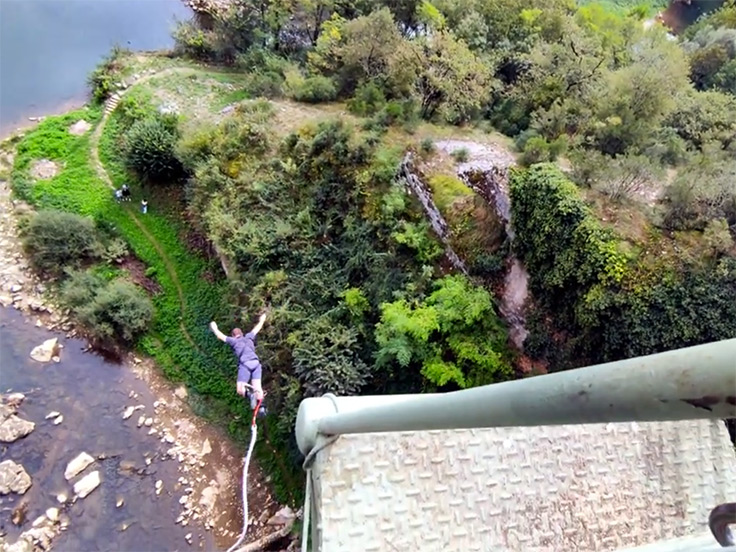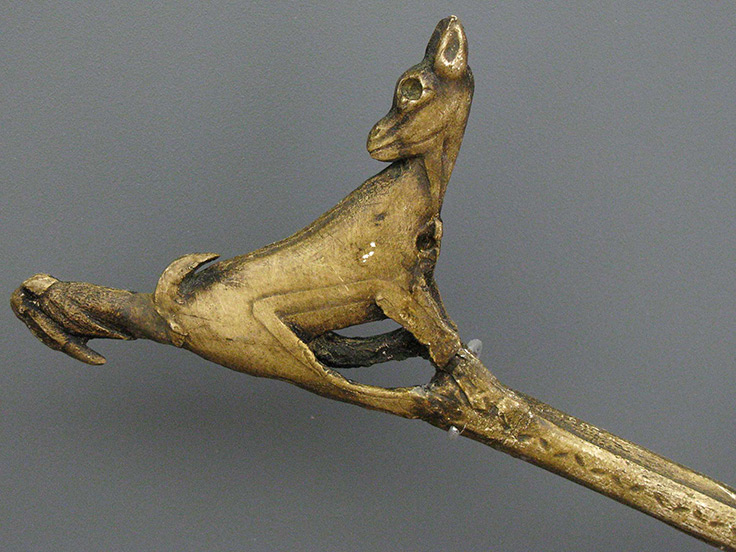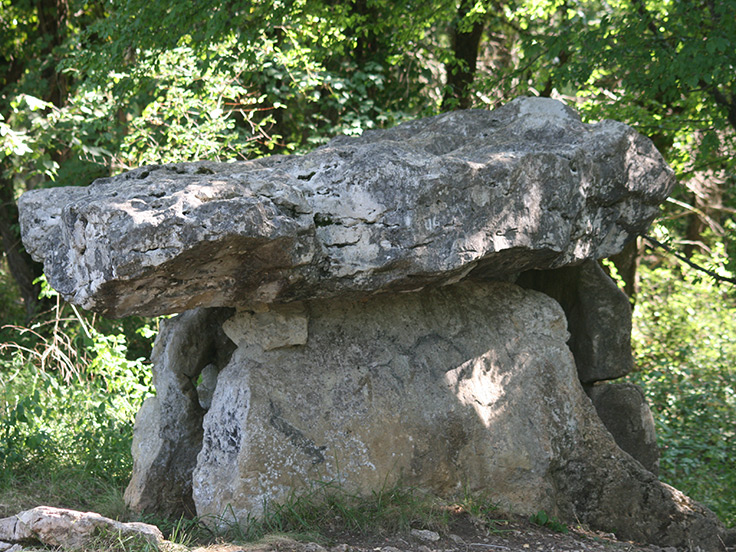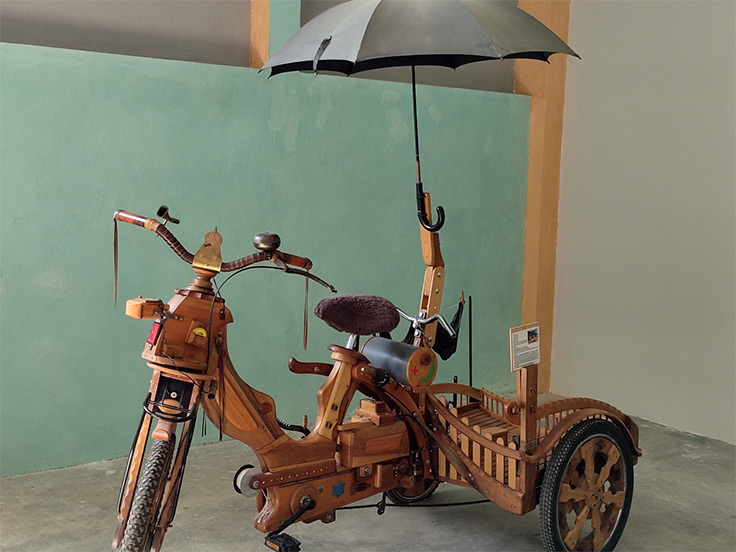Les incontournables du Mas-d'Azil
Partez à la découverte touristique du village du Mas-d'Azil en Ariège, au pied des Pyrénées
Au cœur de la vallée de l'Arize, le village du Mas-d'Azil dispose d'un patrimoine unique à découvrir avant toute chose ! Situées à quelques minutes du camping Le Petit Pyrénéen, ces merveilles vous feront voyager dans le temps et dans l'histoire.
La Grotte du Mas-d'Azil
La Grotte du Mas-d'Azil est un site naturel d'exception. Elle est mondialement connue et présente une particularité unique en Europe : non seulement ses dimensions sont exceptionnelles, mais surtout, elle est traversée par la route qui vous plonge dans les entrailles de la terre sur plus de 400 mètres... Frissons garantis à la traversée, en voiture ou à pied.
La Grotte a abrité des hommes préhistoriques à l'ère magdalénienne, et de nombreux vestiges préhistoriques y ont été retrouvés. La visite guidée (à réserver sur place ou sur la page dédiée du site de l'Office de Tourisme) vous emmènera dans les galeries souterraines, sur les traces des premiers hommes, et vous fera découvrir tous les secrets du lieu, dans une ambiance colorée.
Vous apprécierez également le site extérieur de la Grotte : différents sentiers de randonnée vous conduiront sur les hauteurs et vous dévoileront des perspectives et des panoramas inédits sur les environs. Vous pourrez profiter de l'espace naturel aménagé à l'extérieur de la Grotte pour partager un pique-nique au bord de l'Arize, vous prélasser dans l'herbe ou faire une pause rafraîchissante à la Maison de la Grotte (vente sur place et à emporter).
Pour les plus audacieux, des sauts à l'élastique depuis la passerelle située à 70 mètres au-dessus de la voûte, sont organisés les week-ends.
Possibilité en semaine pour des groupes de 15 personnes minimum.
Réservation obligatoire auprès de Elastic Jump au 06 78 90 21 69 ou au 05 61 74 64 00.

À l'entrée nord de la grotte, des artisans d'art et un souffleur de verre vous proposent de découvrir leurs univers colorés.
Le Musée de la Préhistoire

Le Musée de la Préhistoire est situé dans le village du Mas-d'Azil, à côté de l'église, et vous permet de prolonger votre visite de la grotte. Le billet de la visite de la Grotte vous donne accès au Musée qui abrite les collections d'objets trouvés sur le site. Vous y découvrirez armes, outils, objets d'art mobiliers sculptés, gravés, décorés d'une qualité admirable ainsi que les fameux galets peints, emblèmes de la civilisation azilienne, et notamment le célèbre « Faon aux oiseaux », considéré comme un chef d'œuvre du paléolithique.
Xploria, la forêt à remonter le temps

Voisin du camping Le Petit Pyrénéen, le Musée-Parc Xploria est situé à Castagnès dans une forêt de châtaigniers centenaires.
Au programme, un voyage au cœur de l'évolution terrestre : fouilles archéologiques, dinosaures ou tigres à dents de sabre, ou encore nymphes et libellules, dans un univers botaniques riches en surprises.
Forêt de Castagnès
Route de Sabarat
09290 Le Mas-d'Azil
Tél: 05 61 60 03 69
Les Dolmens

Le Mas-d'Azil est un site riche en vestiges préhistoriques. Un circuit au départ de la Place du Fond de la Ville, permet de découvrir trois dolmens très bien conservés. Le parcours aménagé vous guide sur les crêtes avec de beaux points de vue sur les Pyrénées et les collines avoisinantes.
Circuits et conseils à l'accueil du camping Le Petit Pyrénéen.
 L'Affabuloscope, voyage dans un univers surréaliste
L'Affabuloscope, voyage dans un univers surréaliste

L'œuvre d'un homme, d'un immense artiste : Claudius de Cap Blanc.
L'œuvre d'une vie, plus de 650 créations sur 30 années.
C'est un endroit, hors du monde, dans le monde inventé d'un génie surréaliste et poétique : 3 niveaux de 500 m² pour se plonger dans cet univers fabuleux, fantastique, ludique et riche d'inventions. C'est un voyage merveilleux, dans le temps et dans l'imaginaire. La Salle des Machines, les Vélos singuliers, les Pankous... On peut y passer des heures sans voir le temps passer, seul ou en famille. Un vrai coup de cœur à consommer sans modération !
Kokopelli
Kokopelli, c'est un musée semencier ! L'Association œuvre à la préservation de la biodiversité menacée par les pratiques agro-industrielles des dernières décennies. Chaque année, entre 1600 et 2000 variétés de semences biologiques sont préservées et proposées à la vente. La boutique Kokopelli est située juste au-dessus du camping Le Petit Pyrénéen, au milieu de jardins travaillés selon différentes techniques agro-écologiques. La boutique vous propose de découvrir cette incroyable diversité de plantes potagères, aromatiques, médicinales et florales et dispose également d'un espace librairie.
Horaires de la boutique :
- du lundi au jeudi de 10h à 17h
- le vendredi de 10h à 16h






